In India Veda’s are traditional ways of living life. This text has all the necessary information we need to live our life like health, religious information, and medicinal information. What we need, when and how we get the same, these answers can be found in our Veda’s.
Pure desi cow ghee has been mentioned as RASA in our Vedas. Rasa gives us ojas for life. Ojas give us health, beauty, and longevity. Vedas has also described the process of obtaining desi cow ghee from cow milk, this process is actually called Bilona Churned. Bilona Churned is a method of obtaining ghee from cultured butter by churning curd with wooden churners.
Read More : Traditional Bilona Churned Desi Ghee
What is Vedic Ghee?
Vedic Ghee – refer to ghee properties described in Ayurveda. According to Ayurveda real ghee is what we obtain through the traditional ghee making process, where every step is necessary and authentic. In villages of India people still using traditional ghee making process to obtain ghee from milk. The thing that they keep in mind are:
- Maintain the quality of milk: They offer green-leafed food in which they do offer soya and other content, so that cow could have a healthy diet. Also, while making ghee they boil the milk till its thickness goes over the normal cream. They do not use the cream for making ghee, instead, they use curd root to obtain Desi Cow Milk Ghee.
- Feed the Calf too: Only 70% of milk is obtained and 30% left for the calf.
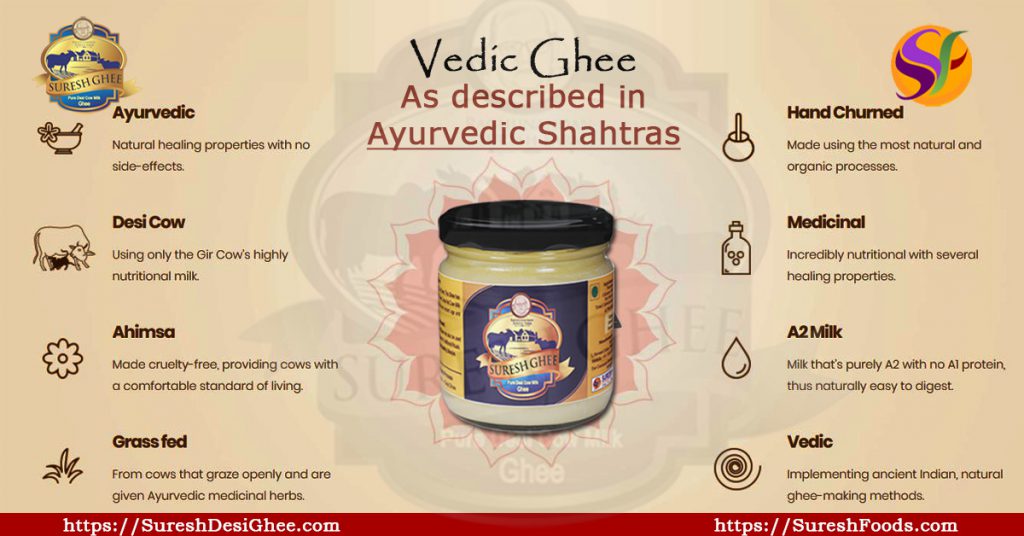
- Use earthen pots and wooden churners: Traditionally people of India, use earthen pots to boil the milk, make the curd and use wooden churners to obtain unsalted cultured butter from the curd. They ensure the purity of the butter. No chemical is used in this process.
- Say no to Chemical or Injections: Real ghee can be obtained from organic grass-fed cow’s milk only. They don’t require any chemical or injection to produce extra milk. People collect only what cow can easily give and save a satisfying amount for her calf.
- Ethics of worship Gau Mata: Do not treat her as a milk machine. Only take excess milk once calves are satiated. Do not force artificial pregnancies. Do not force hormones to increase milk yield. Do not keep them in prison. They must graze daily in the jungle or Gauchar.
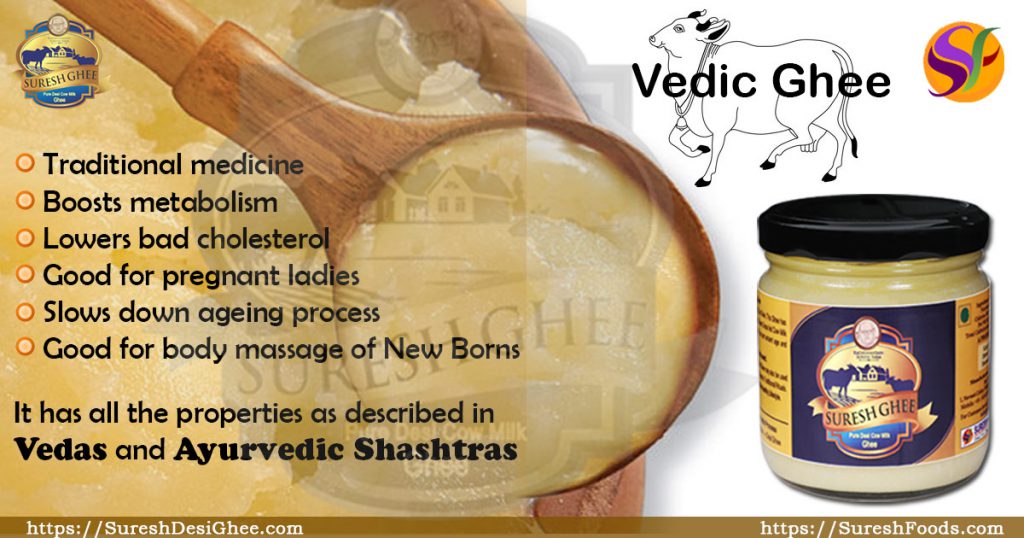
Vedic Ghee is prepared by churning the curd. The curd is churned with a wooden churner in the traditional method and then heating the cream obtained from it. The process of creating traditionally clarified butter is complete once the water is evaporated and the fat (clarified butter) is separated from the milk solids. In this process, around 27 litres to 28 litres of milk is used to make just 1 KG of ghee! It has all the properties as described in Vedas and Ayurvedic Shastras.
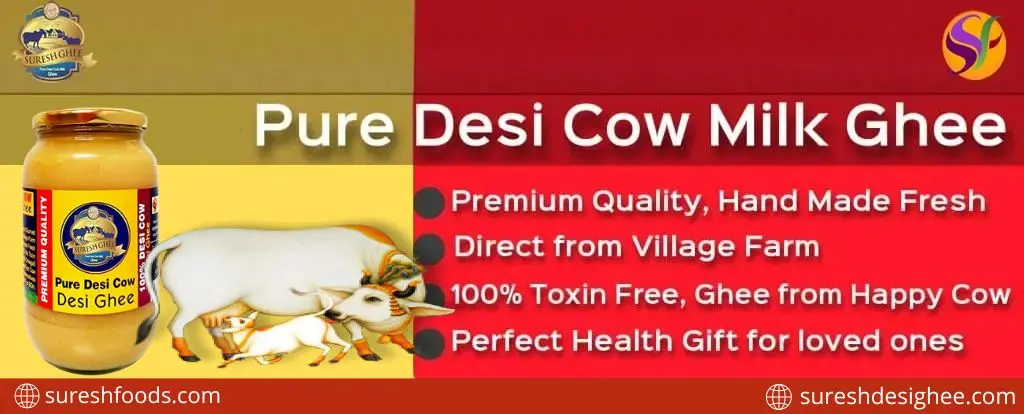
Buy cow Ghee Online: Order Now. Free Shipping
In another method. Ghee is prepared by simmering butter, which is churned from cream, skimming any impurities from the surface, and then pouring and retaining the clear, still liquid fat, while discarding the solid residue that settles on the bottom. Spices can be added for flavour. The texture, colour, and taste of ghee depend on the quality of the butter, the source of the milk used in the process and the duration of the boiling.
Properties of Vedic Ghee :
Desi ghee is typically prepared by simmering butter, which is churned from cream (traditionally made by churning Dahi), skimming any impurities from the surface, and then pouring and retaining the clear liquid fat while discarding the solid residue that has settled to the bottom.
Spices can be added for flavour. The texture, colour, and taste of desi ghee depend on the quality of the butter, the milk source used in the procedure and the duration of time spent boiling. Who says tasty can’t be healthy? Rediscover the many health benefits for which pure cow ghee has been implemented since ancient India.
From its dietary uses to its lifestyle applications, discover how pure cow ghee is a must-have addition to your staples, being more beneficial than regular commercial ghee. Cow hee boosts metabolism. It lowers bad cholesterol. Good for pregnant ladies. Slows down the ageing process. Good for body massage of newborns.
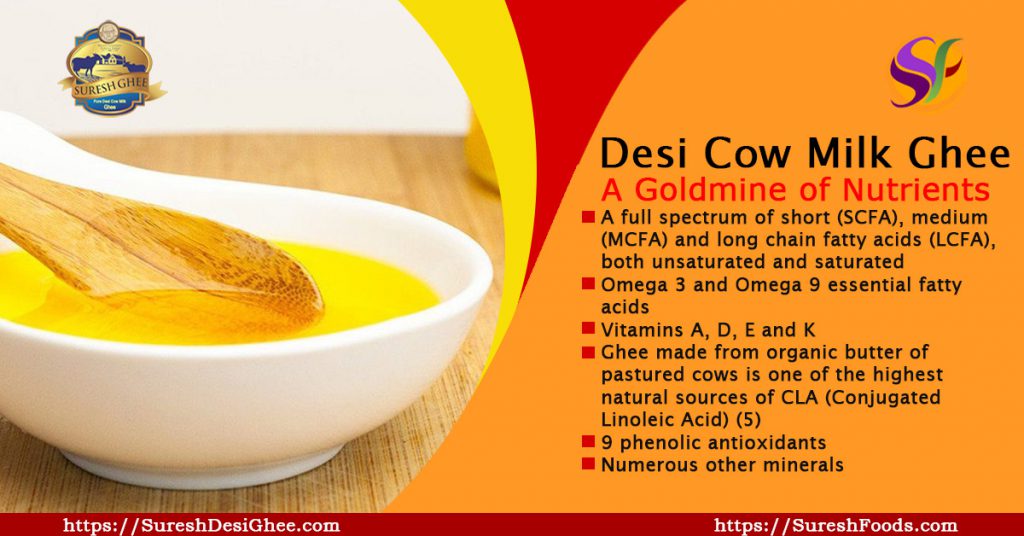
There are various factors on which the price of ghee differentiates.
Pure cow ghee must be fit in certain parameters. Maintaining a single-breed cow farm is very difficult. Also, the packaging is done by Glass jars in that case the transportation is challenging.
- Some cows: With more no. of cows, the amount of milk quantity increases. So to make larger quantities of ghee which can be made here, milking cows are to be considered here and one more fact is their maintenance. The gaushalas with several milking cows may offer to sell the ghee.
- Process of making ghee: If the traditional method of making ghee uses 25 to 30 liters of milk to make 1 liter of pure ghee manually hand-churned billion.
- Maintenance of Gaushala: The farmer can sustain the business if he can make enough money to run gaushala and his home, so finally it makes a notable profit from his sales which affects the price of ghee.
- Cost of transportation: If your location is near to the city, the land cost will be increased, but the cost of transportation will be less, so many gaushalas are in the village only in that case the transportation cost will be increased. So location is also a cost-decidable factor.
- Cows feed and care: All the revenue is dependent on cow milk. If cows stop giving milk, we have to care for them in the sickness of lifelong expense. Due to recent lifestyles, cows are considerably expensive now.
Conclusion
Ghee is very good for our health but it must be pure cow’s milk ghee. Ghee is the food that not only adds flavour to food but also makes our food healthy. Deso cow ghee is a rich source of vitamins. Pure desi cow milk ghee is beneficial for our health as it contains lots of fats which provide more energy to our body. Use a spoonful of ghee in your diet.
FAQ
Regular ghee available in the market is normally produced from cream obtained from mass-collected milk, procured from various villages. As a result, there is a minimal control over the quality of the milk sourced and the diet of the cows, and such technique deviates from Ayurvedic recommendations.
According to the production of our Vedic Ghee, the main ingredient is milk procured from free-range Gir cows, which mostly graze in the open pastures. Such milk is completely natural, free from any involvement of chemicals and preservatives, and is cultured with the help of traditional curd as an initial culture. The outcome as a highly nutritious curd is later churned in the early morning hours, to produce the best quality butter. Such butter is slowly simmered over a low heat flame to remove milk solids and make 100% pure A2 Vedic Ghee.
Indigenous cows have A2 genetics, which produces milk that is a rich source of A2 protein, providing considerable nutritional benefits to the body. Across India, each state tends to praise its native A2 cow breeds, which have developed and adapted over thousands of years to excel in the given regional climates. Such cows demonstrate vigorous immunity levels and need no hormonal or chemical involvement, unlike foreign A1 breeds, which frequently struggle to evolve to the Indian climate. Consequently, it is foremostly A2 local breeds that can deliver hormone-free and chemical-free milk, an important component in the generation of Vedic Ghee.
The production of Vedic Ghee is anchored in the utilization of ethically produced milk from indigenous cows that usually graze in forests by cautiously adhering to the process outlined, accompanied by a purity test report, providing necessary insights into its purity framework and nutritional value.

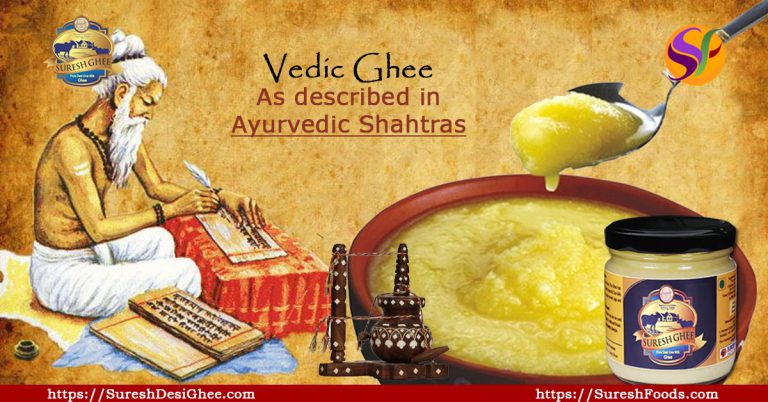


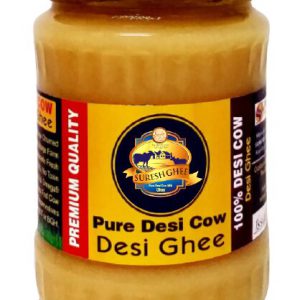
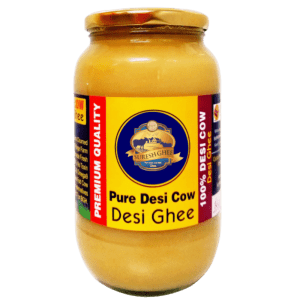
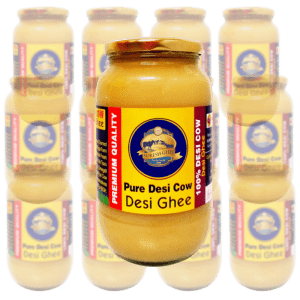
 WhatsApp us
WhatsApp us
Naveen m...